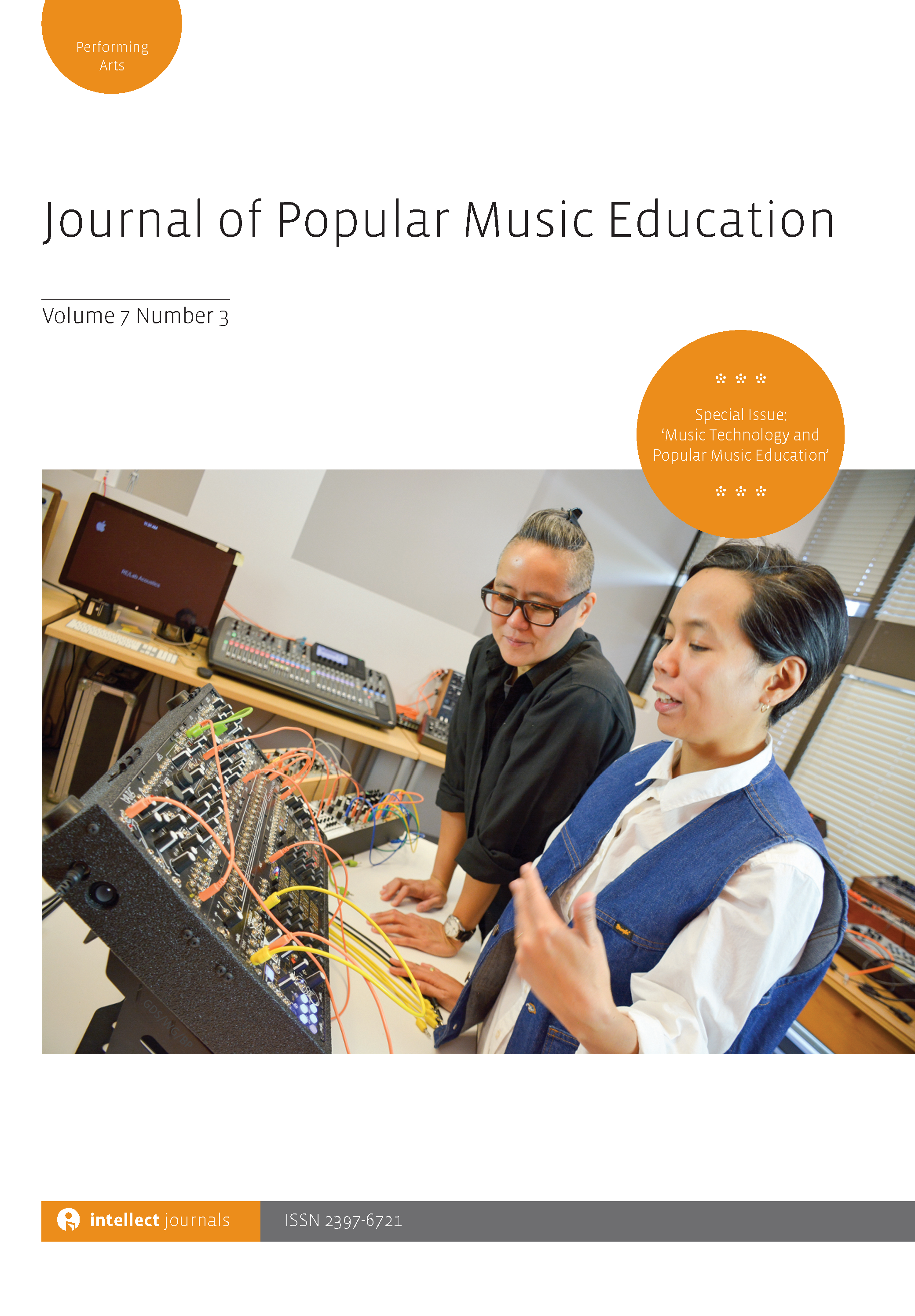
Full text loading...
 , Ian Cummings1
, Ian Cummings1
In music teacher education in the United States, fieldwork experiences are often required for teacher certification and historically served as a platform for preservice music teachers to develop content and pedagogical knowledge as they transition to being professional music teachers. Instrumental music education fieldwork experiences remain largely siloed in band and orchestra contexts, while limited researchers have sought to investigate popular music education (PME) fieldwork experiences. As a duoethnography, this article highlights the lived experiences of two popular music educators in the creation of a new popular music fieldwork experience in a small town in the northeastern region of the United States. The authors suggest expanding undergraduate music education to include learner-led and democratic teaching practices in PME classrooms and increase popular music pedagogies in music teacher preparation curricula.

Article metrics loading...

Full text loading...
References


Publication Date:
https://doi.org/10.1386/jpme_00106_1 Published content will be available immediately after check-out or when it is released in case of a pre-order. Please make sure to be logged in to see all available purchase options.